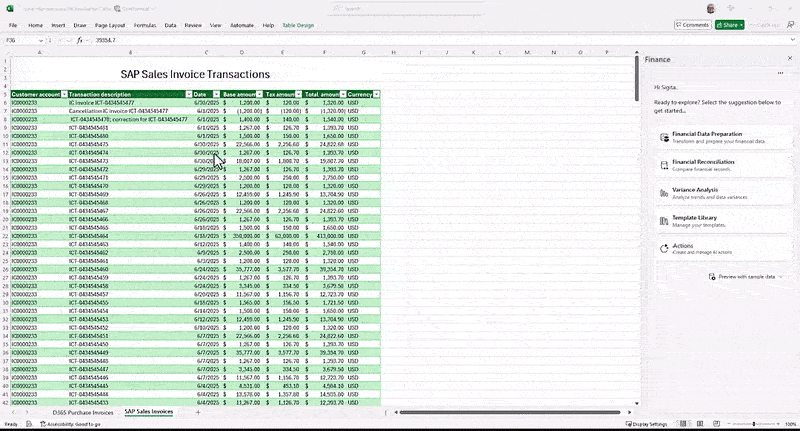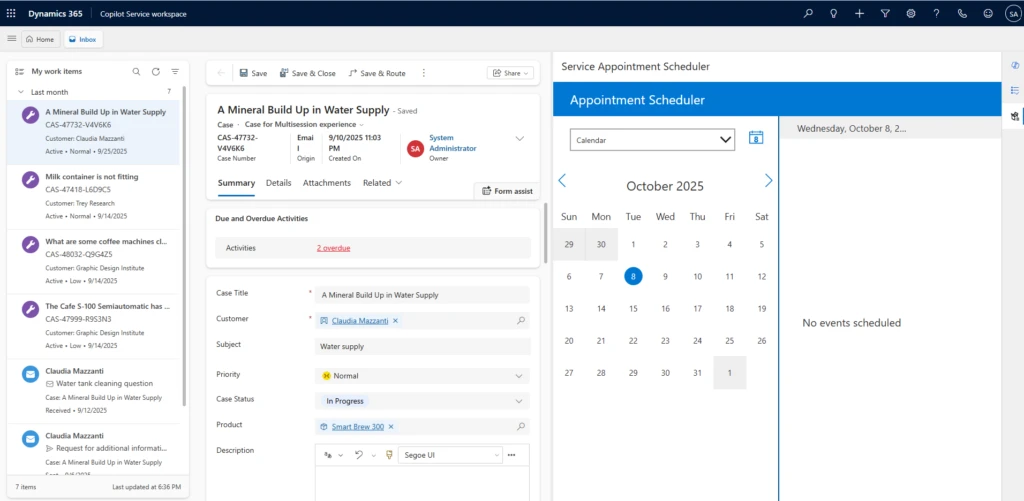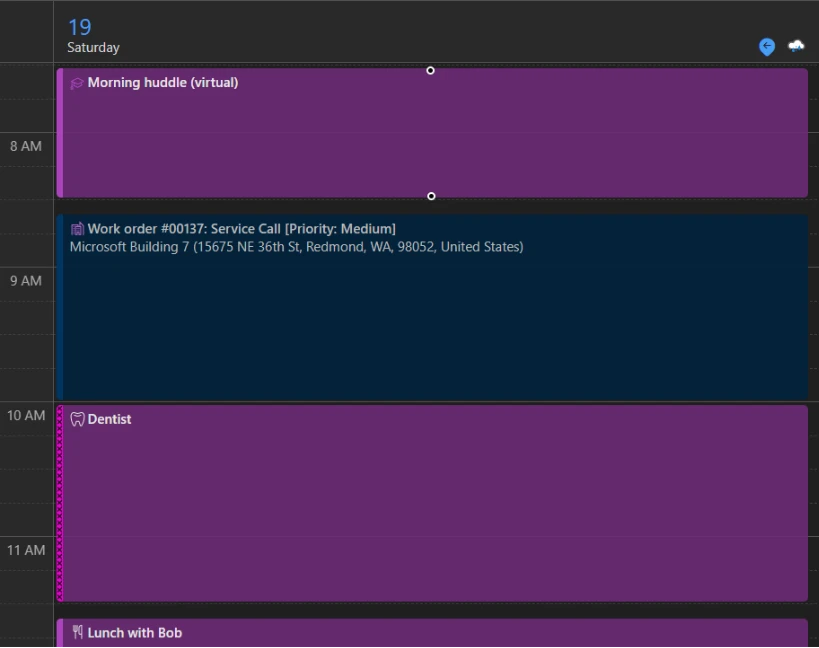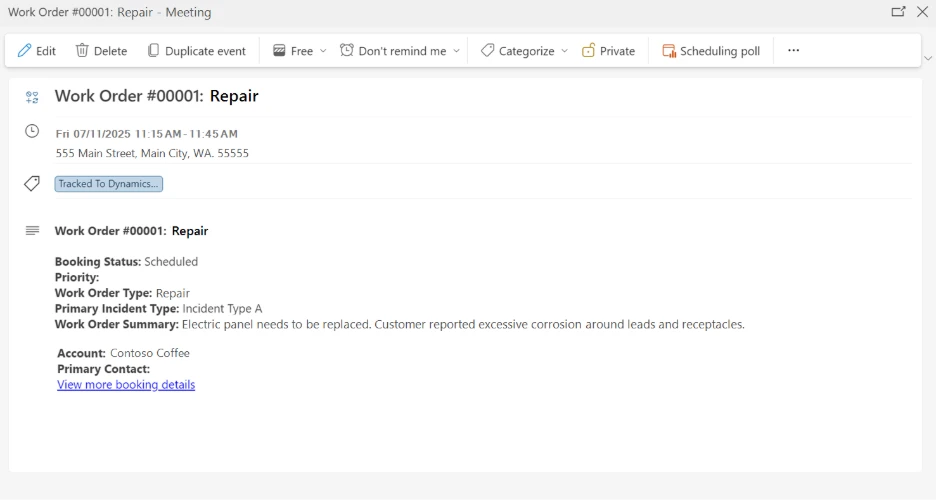
Empowering Finance with an AI Assistant in Microsoft 365 Copilot
This article is contributed. See the original author and article here.
The Finance solution in Microsoft 365 Copilot is now generally available
Finance plays a critical role in helping organizations make confident, data-driven decisions. Yet despite decades of automation, much of finance work still happens in spreadsheets and emails. Teams spend hours reconciling data from multiple systems, investigating variances, or fielding ad-hoc questions about budgets, spend, or invoices. The result is slower insight, longer close cycles, and less time for strategic analysis.
The Finance solution in Microsoft 365 Copilot, formerly Microsoft Copilot for Finance, is now generally available, helping finance teams bring ERP-connected data and workflows directly into the flow of work. Built with Microsoft 365 Copilot, this role-based AI solution connects to your existing systems of record, such as Microsoft Dynamics 365 Finance or SAP. It also infuses AI assistance into the tools you already use every day, like Excel and Outlook.
The result: faster financial operations, fewer manual handoffs, and better collaboration between finance, business teams, and IT.
A New Way to Work With Finance Data
Microsoft 365 Copilot bridges productivity tools and enterprise systems, so financial information becomes conversational and accessible. Instead of switching between applications or waiting for manually generated reports, you can simply ask questions in natural language:
- “Identify the key drivers for forecast variances for March.”
- “Highlight period over period trends across regions.”
- “Draft a response to the customer regarding the last payment.”
Copilot interprets the request; when needed, retrieves data from ERP systems under your existing governance controls, and provides traceable, actionable answers. It not only lists figures, it highlights anomalies, explains the drivers of change, and creates draft narratives ready for review or sharing.
This connected experience reduces repetitive work. It also shortens the time between question and answer, and keeps financial insights grounded in governed, auditable data.
Core Capabilities Now Available
The Finance solution in Microsoft 365 Copilot delivers a suite of capabilities designed to simplify financial operations, improve accuracy, and enhance productivity across the finance organization.
Financial Reconciliation (Generally Available)
Reconciliation has always been one of finance’s most time-consuming tasks: matching transactions, detecting exceptions, and validating balances. Copilot transforms this process into an interactive experience.
It identifies unmatched transactions, detects potential differences, and suggests next steps. You can review and confirm matches directly in Excel, reducing manual work and improving audit confidence. Show the desired workflow to Copilot once, save it as a template and set up an AI action to get the same steps to be performed on a regular basis. The results can be mailed directly to your inbox. Organizations piloting these capabilities have reduced reconciliation time from days to hours while improving overall data quality.

Customer Communications in Outlook (Public Preview)
Finance teams often handle hundreds of customer inquiries via email: checking payment status, confirming invoices, or clarifying balances. With Copilot in Outlook, these messages become opportunities for automation. When an inquiry arrives, Copilot drafts a context-aware reply that includes relevant invoice details or payment confirmations pulled directly from ERP data. Finance professionals can review and send with confidence, knowing each response is accurate, consistent, and aligned with company records.
Variance Analysis (Public Preview)
When actuals deviate from the forecast, finance teams must quickly understand why. Variance analysis in Copilot accelerates this process. It identifies anomalies or shifts in financial performance and uses natural language to explain key drivers, such as currency fluctuations, delayed revenue recognition, or cost overruns. It can even draft summary explanations for management reporting. Instead of spending hours building pivot tables, finance teams can spend minutes reviewing insights and refining recommendations.

Data Preparation in Excel (Public Preview)
Preparing data for analysis can consume more time than the analysis itself. Through the Finance solution, Copilot automates this step. When ERP data is exported into Excel, Copilot recognizes column types, fills missing values, and reshapes tables into analysis-ready formats. The result is cleaner, standardized data for forecasting, reporting, and machine-learning models—all produced in a fraction of the time.
Together, these capabilities give finance professionals a connected, AI-assisted workflow across Microsoft 365, where every task, from reconciliation to communication, happens faster, with fewer errors and greater insight.
Enterprise-Grade Security and Governance
The Finance solution is built on the same trusted security foundation as Microsoft 365. All interactions honor existing role-based access, compliance, and audit controls, ensuring users only see the data they’re authorized to view. Finance data never leaves your governed environment, and all prompts and responses remain subject to your organization’s security, data-loss-prevention, and privacy policies.
For IT leaders, this design delivers confidence that Copilot operates within the same enterprise boundaries as your other Microsoft 365 workloads—no additional infrastructure or integration complexity required. Identity management, permissions, and governance remain consistent across finance, sales, and service scenarios.
Deployment and Management Made Simple
IT administrators can deploy the Finance solution directly from Microsoft AppSource, making it easy to discover, install, and configure without custom integration work. Once installed, the solution can be connected to your organization’s ERP systems, such as Dynamics 365 Finance or SAP, through guided setup experiences.
Because it runs within Microsoft 365 Copilot, deployment aligns with your existing Microsoft 365 tenant configuration. There’s no new infrastructure to provision and no separate AI environment to secure. Administrators can manage permissions, configure data connections, and monitor adoption through familiar Microsoft 365 admin centers.
Finance leaders, meanwhile, can roll out Copilot incrementally, starting with high-impact tasks like reconciliation and variance analysis, before expanding to broader finance workflows across teams and regions.
How to Get Started
The Finance solution in Microsoft 365 Copilot is designed to integrate with your current environment quickly. Here’s how to begin:
- Check prerequisites – Ensure your organization is licensed for Microsoft 365 Copilot and that the users who will access the Finance solution have permissions aligned with your ERP system (for example, Dynamics 365 Finance or SAP).
- Visit Microsoft AppSource – Search for Finance in Microsoft 365 Copilot and initiate the installation.
- Connect your ERP system – Use the guided configuration experience to establish a secure connection between Copilot and your ERP environment. All credentials and permissions remain governed by your existing identity and compliance policies.
- Assign access and roles – Within the Microsoft 365 admin center, assign appropriate access to finance teams and business users based on their roles.
- Start using Copilot – Launch Excel or Outlook and begin exploring finance-related tasks, such as reconciliation support, variance explanations, or drafting customer communications.
- Monitor and optimize adoption – IT can track usage, gather feedback, and adjust configurations as needed through existing Microsoft 365 management tools.
Welcome to the Finance solution in Microsoft 365 | Microsoft Learn
Finance solution in Microsoft 365 Copilot Series | Dynamics Bites Series
From Systems of Record to Systems of Action
By bringing ERP data, productivity tools, and AI assistance together, the Finance solution in Microsoft 365 Copilot helps organizations move from static systems of record to dynamic systems of action. Finance teams no longer have to wait for reports or toggle between applications. They can access insights instantly, collaborate seamlessly, and act with confidence.
For finance professionals, that means faster close cycles and clearer insights.
For business leaders, it means timely answers grounded in governed data.
For IT, it means secure scalability across the Microsoft cloud.
This is finance reimagined for the agentic AI era—more connected, conversational, and compliant by design.
Learn More
The Finance solution in Microsoft 365 Copilot is now generally available. Explore how you can bring AI assistance into your finance organization today.
- Visit Microsoft AppSource to download and configure the solution.
- Review Microsoft Learn documentation for setup and administration guidance.
- Discover more about Microsoft 365 Copilot and role-based AI solutions across Sales, Service, and Finance.
With Microsoft 365 Copilot bringing finance together with your ERP data, you can accelerate decision-making, enhance data confidence, and empower every finance professional to do more, directly within Microsoft 365.
The post Empowering Finance with an AI Assistant in Microsoft 365 Copilot appeared first on Microsoft Dynamics 365 Blog.
Brought to you by Dr. Ware, Microsoft Office 365 Silver Partner, Charleston SC.









Recent Comments